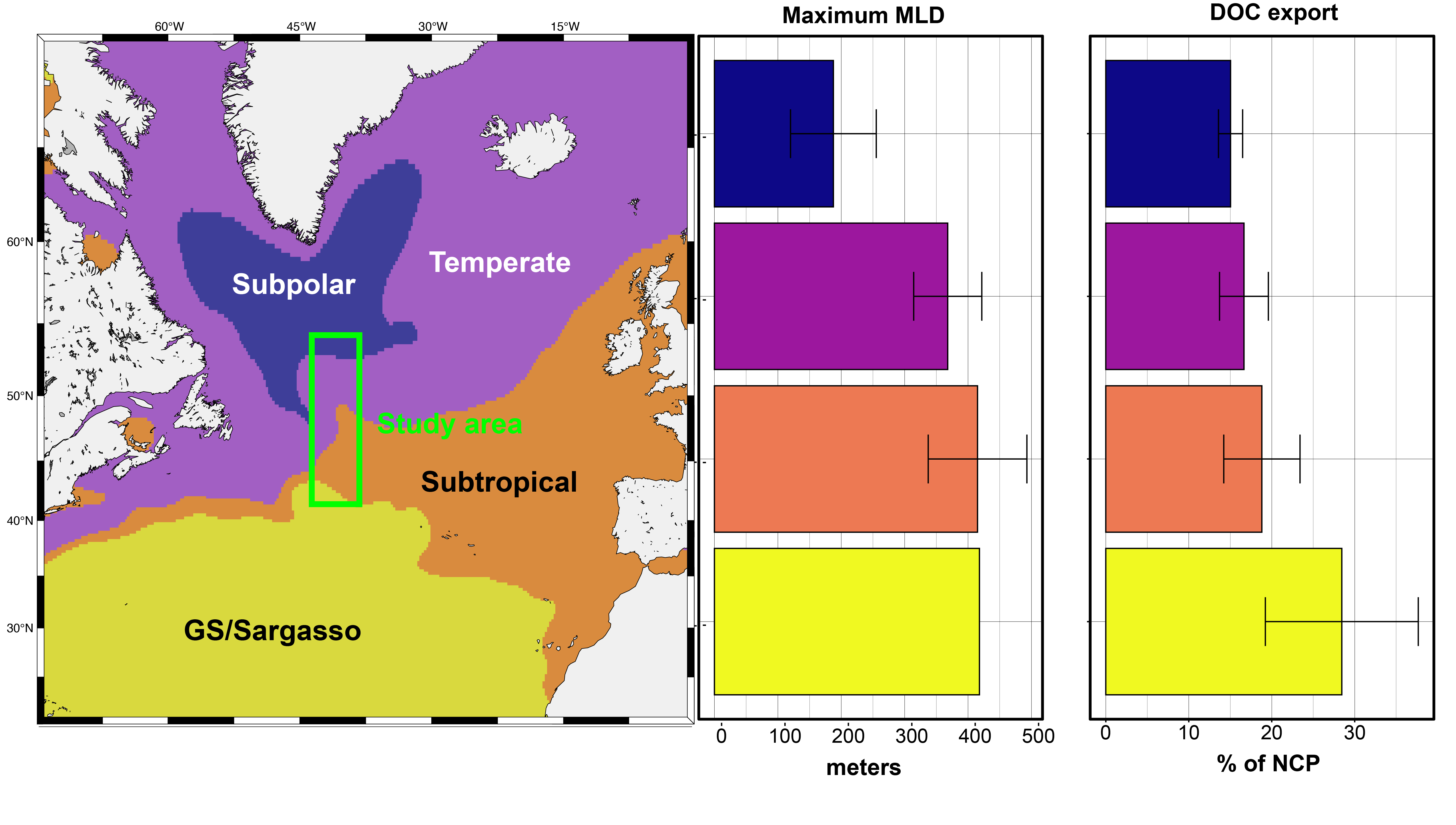North Atlantic Aerosols and Marine Ecosystems Study
Each spring, the Northwest Atlantic Ocean comes alive with one of the largest phytoplankton blooms on Earth, an explosion of microscopic plant life that draws down carbon dioxide from the atmosphere. But what happens to all that carbon once it’s fixed? My doctoral research focused on a critical piece of the puzzle: dissolved organic carbon (DOC) and the microbial and physical processes that determine whether it stays near the surface or is exported into the deep ocean.
Through the NASA-led NAAMES program, which combined shipboard sampling, autonomous floats, aircraft, and satellite observations, I examined how DOC accumulates and moves across space and seasons. This work, funded by the National Science Foundation and described in my dissertation, led to several key insights:
In one study, we developed a new way to estimate DOC export by combining data from autonomous Argo floats and discrete water samples, enabling export estimates even where direct DOC time series are lacking.

DOC export as a percentage of net community production (NCP) from the surface to the annual maximum mixed layed depth (MLD) for the NAAMES study region. ARGO floats provided the ability to estimate the annual maximum MLD, which was used to contextualize biogeochemical measurements from discrete water samples.
In a second paper, we found that as the bloom wanes, bacterial carbon demand becomes more tightly linked to primary production. This shift favors the accumulation of less bioavailable, more refractory DOC that can persist and be exported during winter mixing events.

DOC remineralization by heterotrophic bacteria over weeks to months assessed using seawater incubation experiments. These experiments provided and idea of how much DOC can escape microbial remineralization to potentially be exported and how that differs over seasons.
In a third study, we captured rare in situ observations of bacterioplankton responses to deep convective mixing—showing rapid shifts in microbial production and carbon processing after organic matter was redistributed to depth.
Together, this research highlights how microbial activity and physical mixing work in tandem to regulate the fate of organic carbon in the ocean. These processes not only shape marine ecosystems but also influence how efficiently the ocean sequesters carbon on climate-relevant timescales.
Outreach and Media
We wrote notes from the field, published on NASA’s Earth Observatory Blogs.
Dr. James Allen and I were interviewed about the project on the podcast, Sisters of the Blue.
Dr. Carlson and I participated in an Smithsonian initiative led by Dr. Alyson Santoro, from which a short film by filmaker Brendan Byrne was made:
Nicole
Estaphan, a journalist for WCVB-TV ABC Boston sailed with us on
NAAMES and put together a story for the project: